These 5 Reptiles Are Suitable for a 20-Gallon Tank
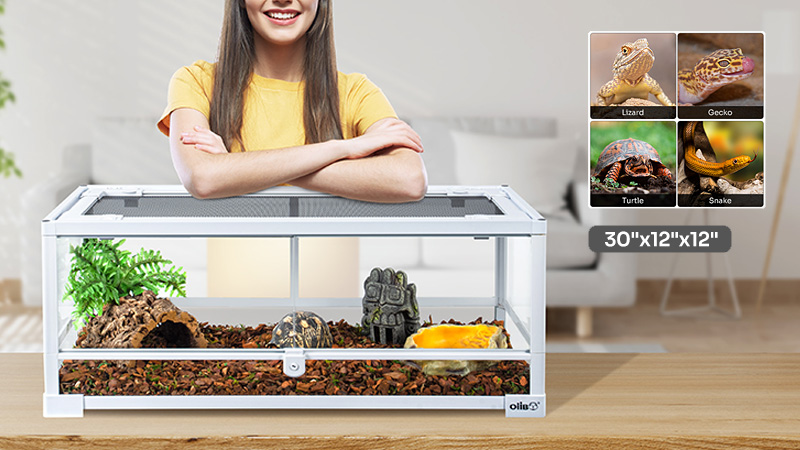
Photo by OIIBO on Amazon
Entering the captivating world of reptile ownership is an exciting endeavor, but it requires careful consideration, especially when it comes to selecting the right reptile for your setup. For many enthusiasts, a 20-gallon tank serves as an ideal starting point due to its manageable size and versatility. However, not all reptiles are suited to this enclosure size, as their needs vary significantly based on species-specific requirements.
In this comprehensive guide, we'll explore a range of reptile options that thrive in a 20-gallon tank environment, considering factors such as size, behavior, habitat requirements, and care considerations.
Factors to Consider:
Before delving into specific reptile species, it's essential to understand the key factors that influence their suitability for a 20-gallon tank:
- Size: The reptile should be small or of moderate size to comfortably inhabit a 20-gallon tank without feeling cramped.
- Behavior: A docile temperament is preferable, especially for beginners, as it allows for easier handling and interaction.
- Habitat Requirements: The reptile's environmental needs, including temperature, humidity, substrate, and hiding places, should align with the tank's dimensions and capabilities.
With these criteria in mind, let's explore some reptile species that meet these requirements and make excellent inhabitants for a 20-gallon tank:
1. Leopard Gecko (Eublepharis macularius)
One of the most popular reptile species for beginner keepers, the leopard gecko is a charming and low-maintenance lizard that thrives in a 20-gallon tank. Native to arid regions of Afghanistan, Pakistan, and India, leopard geckos are renowned for their docile demeanor, fascinating color patterns, and ease of care.
Size:
Adult leopard geckos typically reach lengths of 7 to 10 inches, making them well-suited to a 20-gallon tank setup.
Habitat Requirements:
Leopard geckos require a dry and arid habitat with a temperature gradient ranging from 80 to 90°F on the warm side and 70 to 80°F on the cool side. A sandy substrate, such as reptile carpet or calcium sand, provides a comfortable surface for burrowing.
Diet:
Leopard geckos are insectivores, primarily feeding on a diet of appropriately sized insects such as crickets, mealworms, and dubia roaches. It's essential to provide a varied diet supplemented with calcium and vitamin D3 to ensure proper nutrition and prevent metabolic bone disease.
Behavior:
Leopard geckos are nocturnal creatures, meaning they are most active during the night. They spend much of their time hiding in burrows or under rocks, emerging at dusk to hunt for prey. Despite their shy nature, leopard geckos can become tame with regular handling and gentle interaction.
2. Corn Snake (Pantherophis guttatus)
Corn snakes are another popular choice for reptile enthusiasts, prized for their vibrant colors, docile temperament, and manageable size. Originating from the southeastern United States, corn snakes are relatively easy to care for and thrive in a variety of captive environments.
Size:
Adult corn snakes typically reach lengths of 3 to 5 feet, although some individuals may grow slightly larger. Their slender build and moderate size make them suitable for a 20-gallon tank setup.
Habitat Requirements:
Corn snakes require a well-ventilated enclosure with a temperature gradient ranging from 75 to 85°F on the warm side and 70 to 75°F on the cool side. A substrate of aspen shavings or cypress mulch provides a comfortable bedding for burrowing and nesting.
Diet:
Corn snakes are carnivores, preying primarily on small rodents such as mice and rats. They should be fed appropriately sized prey items every 7 to 10 days, with juveniles requiring smaller meals and adults consuming larger meals.
Behavior:
Corn snakes are diurnal hunters, meaning they are most active during the day. They are solitary creatures by nature but can be handled regularly with minimal stress, making them an excellent choice for novice reptile keepers.
3. Western Hognose Snake (Heterodon nasicus)
Known for their distinctive upturned snouts and quirky personalities, Western hognose snakes are captivating reptiles that thrive in captivity. Native to North America, these snakes exhibit fascinating behaviors and are relatively low-maintenance pets.
Size:
Adult Western hognose snakes typically reach lengths of 14 to 24 inches, with females being larger than males. Their compact size makes them well-suited to a 20-gallon tank environment.
Habitat Requirements:
Western hognose snakes require a semi-arid habitat with a temperature gradient ranging from 80 to 85°F on the warm side and 75 to 80°F on the cool side. A substrate of sand or reptile-safe soil allows for burrowing and naturalistic behavior.
Diet:
Western hognose snakes are primarily insectivores, feeding on a diet of appropriately sized insects such as mice and rats. They may also consume amphibians, lizards, and small rodents in the wild. It's essential to provide a varied diet to ensure proper nutrition and prevent dietary deficiencies.
Behavior:
Western hognose snakes are known for their amusing behaviors, including bluffing, hissing, and playing dead when threatened. Despite their dramatic displays, they are generally docile in captivity and can be handled regularly with proper care and respect.
4. Anoles (Anolis spp.)
Anoles are a diverse group of small lizards native to the Americas, ranging from the southeastern United States to South America. These arboreal reptiles are renowned for their agility, vibrant coloration, and acrobatic displays, making them popular choices for reptile enthusiasts with limited space.
Size:
Anoles vary in size depending on the species, with most adults reaching lengths of 5 to 8 inches, including their long tails. Their small size and arboreal nature make them well-suited to a 20-gallon vertical tank setup.
Habitat Requirements:
Anoles require a vertically oriented enclosure with ample climbing opportunities, live plants, and hiding spots. The temperature gradient should range from 75 to 85°F, with higher humidity levels maintained by regular misting or a humidity-retaining substrate.
Diet:
Anoles are insectivores, feeding primarily on a diet of small insects such as crickets, fruit flies, and mealworms. It's essential to provide a varied diet supplemented with calcium and vitamin D3 to ensure proper nutrition and prevent metabolic bone disease.
Behavior:
Anoles are active, diurnal lizards that spend much of their time basking, foraging, and engaging in territorial displays. They are skilled climbers and jumpers, utilizing their strong limbs and adhesive toe pads to navigate their arboreal habitats with ease.
5. Kenyan Sand Boa (Gongylophis colubrinus)
Kenyan sand boas are a small species of boa constrictor known for their robust build and burrowing behavior. Native to arid regions of East Africa, these snakes are relatively low-maintenance and can thrive in a 20-gallon tank throughout their life.
Substrate:
Provide a substrate that allows for burrowing, such as play sand, as it mimics their natural habitat. Ensure the sand is damp enough to hold its shape without being too wet.
Hiding Spots:
Include a variety of hides, such as rock caves, logs, or commercial hides, to provide your sand boa with a sense of security. It's essential to provide a hide on both the warm and cool sides of the tank.
Temperature and Lighting:
Maintain a temperature gradient of around 85-90°F (29-32°C) on the warm side and a cooler area of around 75-80°F (24-27°C) on the cool side. Use an under-tank heat mat or a heat lamp to achieve and regulate the desired temperatures.
Diet:
Kenyan sand boas are ambush predators and primarily feed on appropriately sized rodents like mice or rat pups. Offer pre-killed rodents to minimize any risk of injury to your snake during feeding.
Conclusion
In conclusion, a 20-gallon tank offers ample opportunities for housing a variety of fascinating reptiles. Whether you prefer the gentle demeanor of a leopard gecko, the vibrant colors of a corn snake, the quirky antics of a Western hognose snake, the arboreal agility of anoles, or the burrowing habits of a Kenyan sand boa, there's a reptile species to suit every preference and experience level. However, it's essential to research each species thoroughly and provide the appropriate habitat, diet, and enrichment to ensure the health and well-being of your reptile companion. With proper care and attention, your 20-gallon tank can become a captivating mini-ecosystem where you and your reptile can thrive together.
You May Also Like
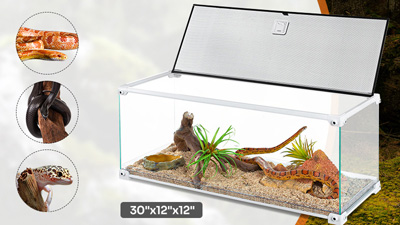 Other PetsThe Versatile and Essential 20 Gallon Reptile Tank
Other PetsThe Versatile and Essential 20 Gallon Reptile Tank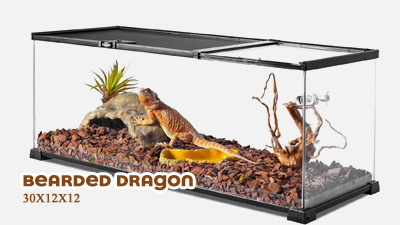 Other PetsIs a 20-Gallon Tank OK for a Bearded Dragon?
Other PetsIs a 20-Gallon Tank OK for a Bearded Dragon?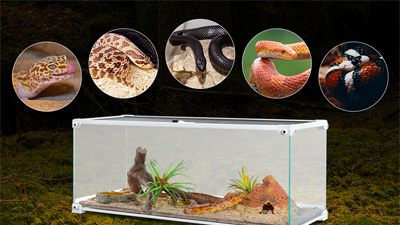 Other PetsIs a 20-Gallon Tank Big Enough for a Snake?
Other PetsIs a 20-Gallon Tank Big Enough for a Snake?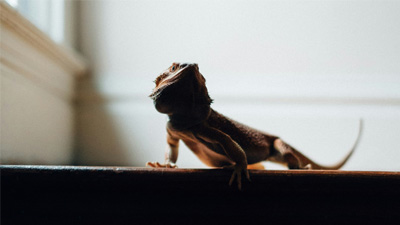 Other PetsThe Top 5 Characteristics of Reptiles
Other PetsThe Top 5 Characteristics of Reptiles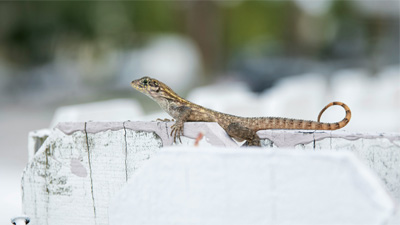 Other PetsExploring Reptiles for Small Spaces: Ideal Pets for Beginners
Other PetsExploring Reptiles for Small Spaces: Ideal Pets for Beginners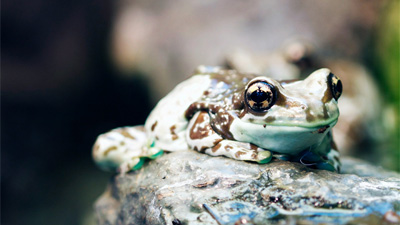 Help & AdviceExploring 10 Easiest Exotic Pets to Take Care Of
Help & AdviceExploring 10 Easiest Exotic Pets to Take Care Of